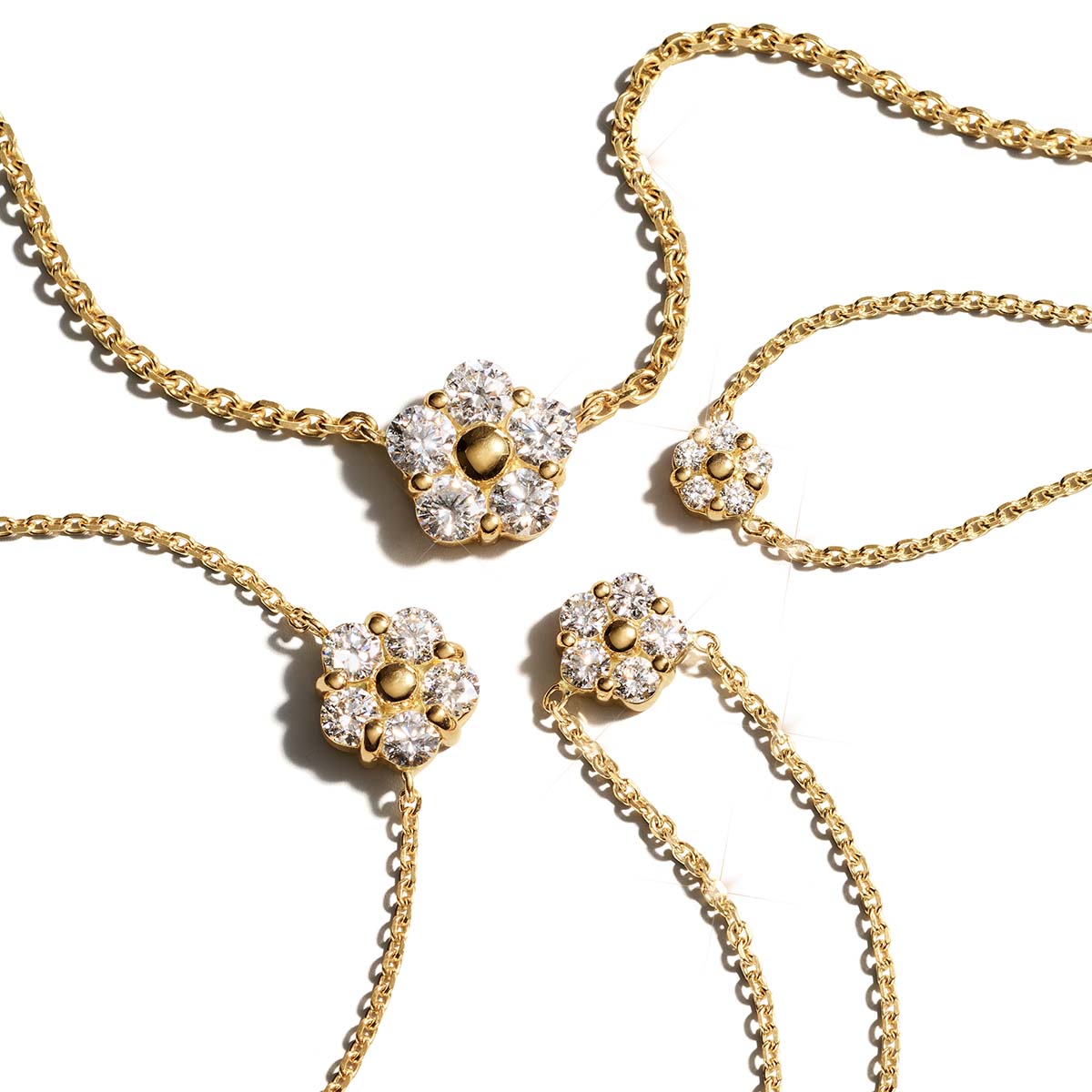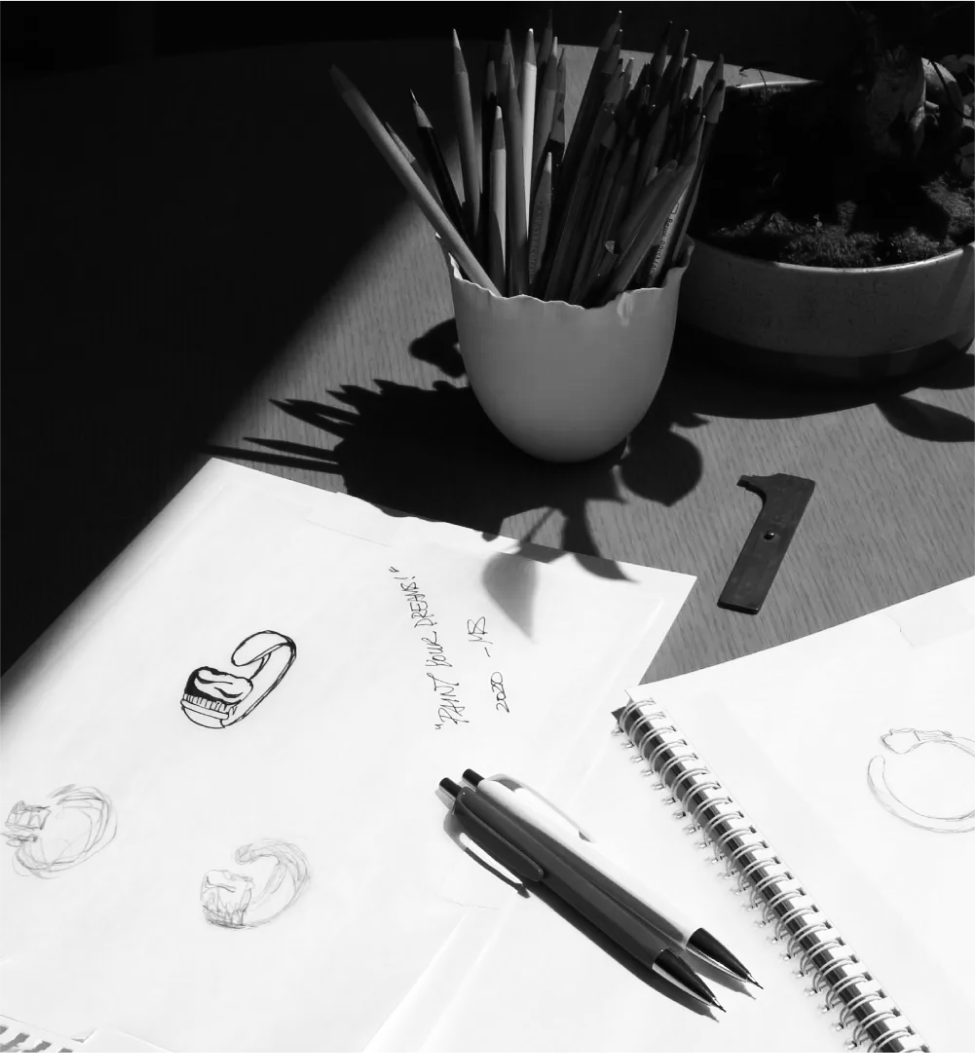Gold Jewelry Glossary
Explore the world of gold in fine jewelry — from karat ratings and gold colors to vermeil, gold-filled, and ethical gold practices.
Gold Jewelry Glossary | Karats, Colors, and Gold Types Explained
Gold is one of the most iconic and cherished materials in jewelry. But not all gold is created equal. This glossary covers everything you need to know about gold — including karat levels, color variations, finishing techniques, and sourcing terminology — to help you make informed decisions when choosing fine jewelry.
What is Gold?
Gold is a naturally occurring precious metal known for its softness, warmth, and resistance to tarnish. It has been used for millennia in decorative arts and jewelry. In its pure form (24 karats), gold is soft and malleable, making it necessary to alloy it with other metals for greater strength and durability in jewelry.
Understanding Karats (Karat Purity in Gold Jewelry)
Karat (abbreviated as K or kt) is a unit of measurement that indicates the proportion of pure gold in an alloy.
24K Gold
- Composed of 99.9% pure gold
- Bright yellow in color
- Very soft and not suitable for most jewelry
- Commonly used in certain cultural or ceremonial pieces
18K Gold
- Composed of 75% pure gold and 25% alloy metals
- Rich, warm golden hue
- Slightly softer than 14K but highly desirable for fine jewelry
14K Gold
- Composed of 58.3% pure gold and 41.7% alloy metals
- More durable and scratch-resistant than 18K
- Widely used for everyday jewelry
Gold Colors in Jewelry
Different metal alloys are mixed with gold to produce a variety of colors, each with its own aesthetic and wear characteristics.
Yellow Gold
- Mixed with copper and silver to maintain a classic golden tone
- Timeless and often associated with traditional styles
White Gold
- Created by alloying gold with white metals like palladium or nickel
- Often plated with rhodium for enhanced brightness and scratch resistance
- Offers a modern, neutral tone
Rose Gold
- Made by mixing gold with copper
- Features a pink or reddish hue
- Known for its romantic and vintage appeal
Gold Vermeil
Gold vermeil is a high-quality jewelry finish that consists of a thick layer of gold plated over a base of sterling silver. For jewelry to be classified as vermeil, it must meet specific criteria:
- Gold layer must be at least 10K in purity
- Thickness must be at least 2.5 microns
- Base metal must be sterling silver (not brass or other metals)
Vermeil is a premium alternative to traditional gold plating, offering better durability and value.
Gold-Plated vs. Gold-Filled Jewelry
Gold jewelry is often made using different techniques to apply gold to a base metal.
Gold-Plated
- Involves applying a very thin layer of gold (often less than 0.5 microns) over a non-precious base metal
- Least durable of gold types
- Can wear off over time, especially with frequent contact or moisture
Gold-Filled
- Features a thick layer of real gold (usually 14K) mechanically bonded to a base metal
- The gold layer is significantly thicker than in gold-plated jewelry
- More resistant to tarnish and fading; suitable for frequent wear
Ethical & Recycled Gold
Ethical gold refers to gold that is sourced in a responsible and transparent way, with minimal environmental impact and no ties to conflict zones. Recycled gold is refined from existing jewelry, industrial sources, or scrap, and is chemically identical to newly mined gold.
Benefits of recycled and ethically sourced gold:
- Reduces demand for destructive mining
- Supports sustainable practices
- Maintains the same quality and purity as virgin gold
Gold Hallmarks
A hallmark is a stamped marking found on gold jewelry that certifies its purity and authenticity. Common hallmarks include:
- “24K”, “18K”, or “14K” – Indicating karat purity
- “585”, “750”, or “999” – Numeric equivalents used internationally
- Additional marks may indicate the country of origin, manufacturer, or certification body
Hallmarks are an important assurance of quality and are required by law in many countries.
FAQs
The choice between 14K and 18K gold depends on your priorities. Both are excellent choices for fine jewelry, and each has distinct properties.
18K Gold
With a composition of 75% pure gold, 18K gold has a richer yellow hue than 14K. The higher gold content also means it is less likely to cause allergic reactions for people with sensitive skin. However, pure gold is a relatively soft metal, so 18K gold is less resistant to scratches and dents, and requires more care.
14K Gold, with its 58.3% gold content, is notably more durable due to its higher alloy percentage. This makes it an excellent option for those with a very active lifestyle who need a more resilient metal for daily wear. Its color is a lighter shade of yellow.
Ultimately, the best choice is the one that aligns with your personal style and how you plan to wear the piece.
Absolutely. Recycled gold is 100% genuine and has the same chemical composition as newly mined gold. The only difference is its origin—it's refined from existing gold sources rather than freshly mined. It's a more sustainable option because it's been refined from previously used jewelry or other gold products.
14K gold means the metal is made up of 58.3% pure gold and 41.7% alloy metals. It offers a good balance of durability and gold content.
Gold vermeil is sterling silver jewelry coated with a thick layer of gold (at least 2.5 microns). It’s a premium alternative to gold plating.



